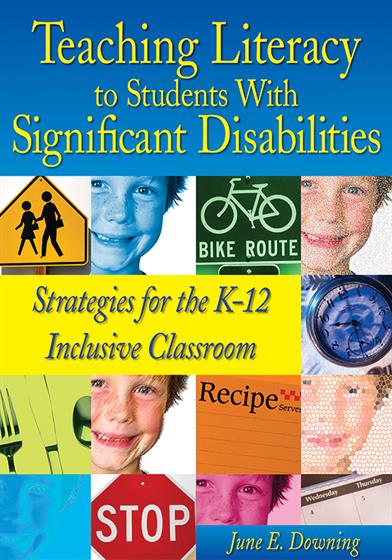Foreword
Acknowledgments
Introduction
About the Author
1. Literacy and a Free Appropriate Public Education
Key Concepts
What Is Literacy?
Literacy and Federal Mandates in Education
Barriers to Literacy Instruction for Students With Significant Disabilities
Attitudinal Barrier
Low Expectations
Limited Opportunities
Limited Means of Accessing Literacy
Limited Time
The Age Factor
Literacy and Quality of Life Issues
Self-Esteem
Self-Determination
Independence
Information Gathering
Organization
Learning
Entertainment
Why Teach Reading to Students With Severe Disabilities?
2. Literacy and Communication
Key Concepts
The Relationship Between Communication and Literacy
Building Relationships
Reading Together
The Benefits of Play Interactions
Emergent Literacy for Students of All Ages
Augmentative and Alternative Communication Devices
Building Shared Experiences for Literacy Development
Documentation of Shared Experiences
Drawings
Photograph Books
Tactile Books
Summary
Frequently Asked Questions
3. Planning Literacy Activities
Key Concepts
General Considerations
Literacy Rich Environments
Benefits of Learning in a General Education Classroom
Access to the Core Curriculum
Not Just Physical Presence
Identifying Literacy Goals
What Are the Literacy Goals of the Individual and the Family?
Determining Present Literacy Skills
Analyzing the Environment and the Need for Literacy Skills
Identifying When Literacy Skills Can be Taught Throughout the Day
Creating Literacy-Learning Opportunities for All Ages
Integrated Related Services
Developing Literacy Materials for Individual Students
Age Appropriateness
Individual Consuderations
Physical Considerations
Visual Considerations
Cultural Considerations
Interesting Material
High Quality
Assistive Technology
Computer Access
Summary
Frequently Asked Questions
4. Teaching Literacy Skills
Key Concepts
Concerns With Some Past Practices
General Considerations When Teaching Literacy Skills
Offering Choices
Following Interest Level
Providing Opportunities
Make Accessible
On the Spot Accommodations
Meaningful Literacy Experiences
The Use of a Daily Planner
Within Task Directions
Self-Monitoring Checklists
Language Experience Stories
Interactive and Fun
Clear Literacy Goals in Mind
Drawing Attention to Conventional Literacy
Balanced Literacy Approach
Specific Instructional Strategies
Draw Attention to the Stimulus and Shape the Response
Model the Behaviors of Reading and Writing
Check for Comprehension
Wait for a Response
Provide Corrective Feedback and Praise
Fade Instructional Support
Teaching Generalization of Skills
Summary
Frequently Asked Questions
5. Evaluating Progress: Next Steps
Key Concepts
Alternative Assessments
Interview
Observations
Review of Past Records
The Link to IEP Goals and State Standards
Adapting State Standards on Literacy
Developing Appropriate IEP Goals and Objectives
Passive Versus Active IEP Goals and Objectives
Standard Linked IEP Objectives
Procedures for Measuring Student Progress
Data Collection
Easy to Use Forms
Portfolio Assessment
Using Data for Instructional Purposed
Determining Next Steps
Review Literacy Goals
Raise Expectations
What Are the Logical Next Steps?
Summary
6. The Future for Literacy Access and Instruction
Key Concepts
Improved Strategies to Support Literacy Goals
Strengthening Early Intervention Services
Future Advances in Technology
Bridging the Research-to-Practice Gap
Impact on Personnel Preparation
Impact on Quality of Life
Resources
Glossary
References
List of Tables
List of Figures
Index



